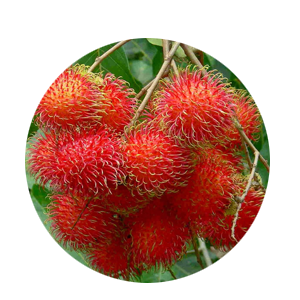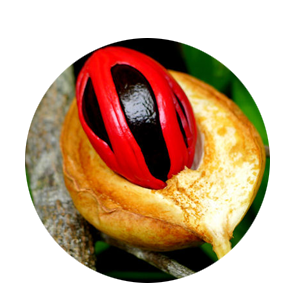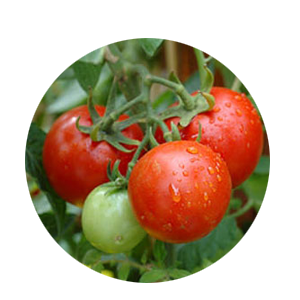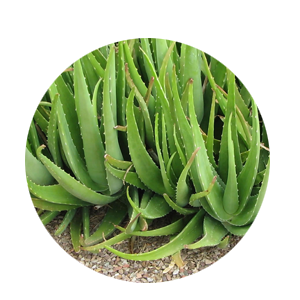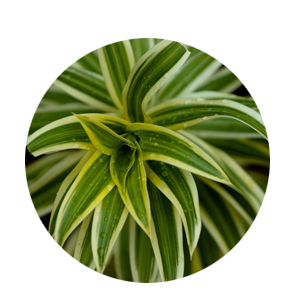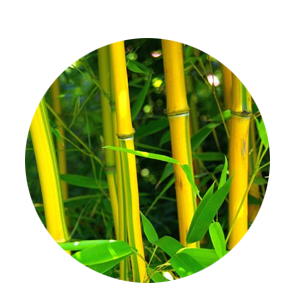Luvika - Seedling - (5x7 bag)

Item Description
GENERAL INFORMATION ABOUT A LUVIKA /Flacourtia jangomas TREE Flacourtia jangomas, Indian coffee plum, is a lowland and mountain rain forest tree in the Salicaceae or Willow Family.It is widely cultivated in Southeast and East Asia, and has escaped cultivation in a number of places.Its wild origin is unknown but is speculated to be tropical Asia, most perhaps India.This tree is very common in the Southern India and carries immense culinary and medical significance, especially in Kerala where it is commonly known as lubica or lovlolika.Fruits are eaten both raw and cooked as a jam, and the bark is sometimes used medicinally.It is sometimes harvested for its lumber. The plant is considered one of the primary host plants of the Queensland fruit fly Flacourtia jangomas is a small, deciduous shrub or tree that grows to a height of 6-10m. Trunk and branches are commonly thornless in old trees, but densely beset with simple or branched, blunt woody thorns when younger. Bark is light-brown to copper-red with a flaky texture and the leaves are light green and narrow ovate in shape. It produces small white to whitish green fragrant flowers. The relatively juicy fruits are rounded pink to dark red and about an inch wide. Flacourtia jangomas fruits are widely eaten around South Asia, both raw and cooked. They are noted for their mild sour and tangy taste. The fruits are pickled, salt-dried or cooked in Indian curries. They can also be blended into juices or made into jams and marmalades which are immensely popular in Southern India. Commercially produced Coffee plum jams and pickles are exported across the world by various companies, mainly from Kerala. HEALTH BENEFITS OF LUVIKA The fruits and leaves of Indian coffee plum are used against diarrhea. Dried leaves are reportedly effective for bronchitis and roots are said to supress toothache. The bark of Flacourtia jangomas has various antifungal and antibacterial costituents which makes it an important ingredient for a few Ayurvedic drugs.Ground bark paste is also used for curing many common ailments in the Tribal settlements Some Health and Medicinal Benefits Lemon 1.Arthritis- The fruit is essential in treatment and prevention of arthritis due to high contents of calcium, phosphorous, zinc and other minerals. 2.Anemia- Regular consumption of this fruit boosts the blood levels in the body. This is due to high levels of iron present in the fruit, making it highly recommended for use in pregnancy and those with menstrual bleeding issues. 3.Treatment of flu and coughs– Governor’s plum is an effective remedy for treatment of flu and cold related symptoms such as sneezing, coughs and running nose. This is due to the presence of vitamin C, A and riboflavin. 4.Management of diarrhea- Governor’s plum is effective in treatment of diarrhea. During episodes of diarrhea, an individual there is loss of huge amount of minerals from the body that may lead to shock and death. Consumption of the fruits helps in replacing the minerals lost during the diarrhea. 5.Treatment of snake bites– The pulp of flesh fruit is applied on the area with snake bite wounds where it neutralizes the poison. However, the pulp should be applied soon after the snake bite has taken place and accompanied by consumption of the fruits for best results. 6.Treatment of brittle bone disease- Governor’s plum is a natural remedy for strengthening of the bones. The minerals present help in making the bones stronger in case of brittle bone disease. 7.Boosts immunity- The presence of vitamin A and thiamine in the fruit helps in enhancing the body’s immune system.The syrup derived from the fruit pulp helps in keeping children from common infections as their under- developed immune system is boosted by the fruit.
Maintanance, Disease Management And Yielding
MAINTANACE OF THE PLANTATION Once a plantation has been established, the work should not be considered finished. It will be necessary, for example, to protect the plantation against weather, fire, insects and fungi, and animals. A variety of cultural treatments also may be required to meet the purpose of the plantation. FERTILIZING Luvika plants grown as protective hedge are hardly manured or fertilized. Manuring, however used as 10-15 kg well-rotten farmyard manure or compost/plant and should be applied before flowering. WATERING AND WEED CONTROL Young Luvika trees should be watered regularly until fully established. In dry western climates, water mature trees deeply at least every one or two weeks. Desert gardeners may have to water more frequently. Mulch the soil around the trees to conserve moisture. Weeding is also very important. Remove all weeds 1.5 meter around the plant. PRUNING AND SHAPE OF TREE Regular plantations of Luvika can be trained on single or double stem. Therefore additional unwanted shoots or laterals are removed from time-to-time to give the plant desired shape. Bearing plants of normal height do not require any pruning. Suckers arising from ground and diseased dried twigs should be removed. PEST & DISEASE LUVIKA TREES Every fruit tree has the future potential for disease and insect damage. Factors such as location and weather will play a part in which issues your tree encounters. If available, disease-resistant trees are the best option for easy care; and for all trees, proper maintenance (such as watering, fertilizing, pruning, spraying, weeding, and fall cleanup) can help keep most insects and diseases at bay. HARVESTING YOUR LUVIKA TREE Luvika fruits mature 100-110 days after fruit set. At this stage fruits develop their natural color. Fruits ripen after this stage, taking about 120 days (after fruit set) when they become soft and attain dark purple/maroon/ red color. Luvika requires 2-3 pickings to harvest the entire crop. On an average, a plant provides 3-5 kg fruits.
- Propogation Method : Seeds & Bulbs
- Plant Climate : Sub Tropical, Normal, Cool, Tropical
- Plant Height : 1-2 feet
- Plant Weight : 1 Kg
- Plant Polybagsize : 5x7
Related Images
- Botanical Name : Flacourtia Jangomas
- Malayalam Name : Luvikka
- English Name : Luvikka
it does have the aroma and taste of pineapple and strawberry
Planting Instructions
PLANT THE RIGHT TREE AT RIGHT PLACE Growing space both above and below ground should be considered when selecting a tree to plant. Too often allowances are not made for the increased size of the tree when it matures. Most problems can be avoided by selecting the proper tree species for the available planting space. GENERAL TIPS 1. Plant at least 3 meter from main overhead utility wires on street or to your home. 2. Plant at least 3 meter from a building. 3. Plant at least 1 meter from sidewalks, driveways, patios and fences. 4. Plant at least 6 meter from other large trees. 5. Plant at least 3 meter from small trees. 6. Prioritize your tree planting with the sun’s direction to maximize shade by planting on the southwestern and western sides of your home BASIC PARAMETERS TO PLANT LUVIKA TREE 1. Soil : A well draining soil is of primary importance as Breadfruit Trees roots do not like to be wet and will rot if allowed to sit in water for extended periods. A mixture of soil, sand and perlite is highly recommended for proper drainage. 2. Planting Distance : For Commercial Plantation :-The planting distance for fence/ hedge should be 1-1.5 m, requiring 300-400 plants for planting along the boundary of one hectare field. If an exclusive planting is to be raised, a planting distance of 2 m x 2 m should be enough. For Home Garden: -In a home garden generally we are planting one or two an luvika trees along with other species of fruit plants. So it is better to keep minimum 3 meter distance from other plants to plant an luvika tree. 3. Pit size : Minimum 60cm width X 60cm Breadth X 60cm depth 4. Sunlight : 100% sunlight is best but can grow up to 50 % shade 5. Watering: During dry weather, initially water the plant once in two days and after one month of planting water every 7 to 10 days during the first year. TEN TIPS FOR PLANTING LUVIKA TREE 1. Dig a hole/pit 3 to 4 times wider than the container (Normally 60cm X 60cm X 60cm is recommended). Fill the pit with top fertile soil to allow for proper root growth. Avoid clay type soil to refill the pit. 2. Add 250 gm Rock Phosphate or Born Meal and 3 to 5 kg Cow dung or compost in the top soil of the pit and mix it thoroughly (Thorough mixing of manure with soil is very important because direct contact of manure with the roots of the plant will cause the damage of roots and plant). 3. Make a small hole in the pit and carefully remove the plant from the container/pot or poly bag keeping the soil around the roots intact. Don‘t yank the plant out of the pot or poly bag as this can separate the roots from the tree. Poly bags can be easily removed by cutting it by a knife and pots can be removed easily by hitting slightly at the top edge of the pot. 4. Set the plant in the middle of the hole. Avoid planting the tree too deep. Keep the base of the trunk is slightly above ground level. Using some soil, secure the tree in a straight position, then fill and firmly pack the hole with the original soil, making sure there aren‘t any air pockets. 5. If the plant is Grafted or Budded make sure the grafted or budded portion of the plant is above the soil. Do not allow to touch the grafted or budded portion in the soil as it burns the skin of the plant. 6. Create a water-holding basin around the pit and give the plant a good watering. After the water has soaked in, spread protective mulch 2–4 inches deep in a 3-foot diameter area around the base of the tree, but not touching the trunk. Also provide a stich as a support for the plant, if needed. 7. The soil and mulch around your plant should be kept moist but not soggy. During dry weather, initially water the plant once in two days and after one month of planting water every 7 to 10 days during the first year. 8. Remove any tags and labels from the tree as these will affect the tree as it grows. You may need to prune any broken or dead branches. For Budded or Grafted plants it is very important that do not allow the growth of off shoots under the grafted/budded portion. Allow the growth of budded/grafted scions only. 9. Do not use chemical fertilizer or any other chemicals on your newly planted trees. Such products will kill your young trees. If needed you can add chemical fertilizers in small quantity (generally below 100gm) after two to three months of planting with sufficient irrigation. 10. Do not over water or allow rain water so much that you see standing water in the pit area of the plant. It will damage the plants roots and results the die of your plant.




